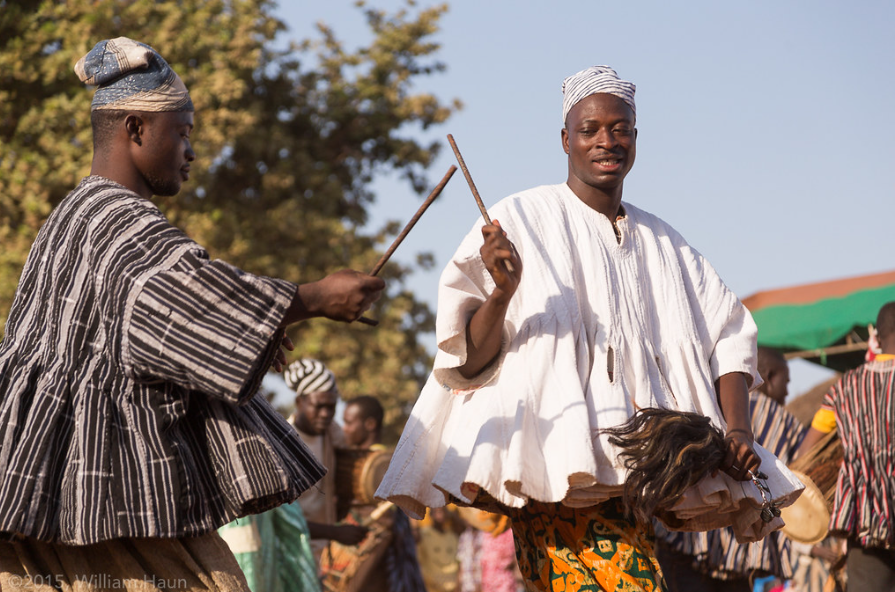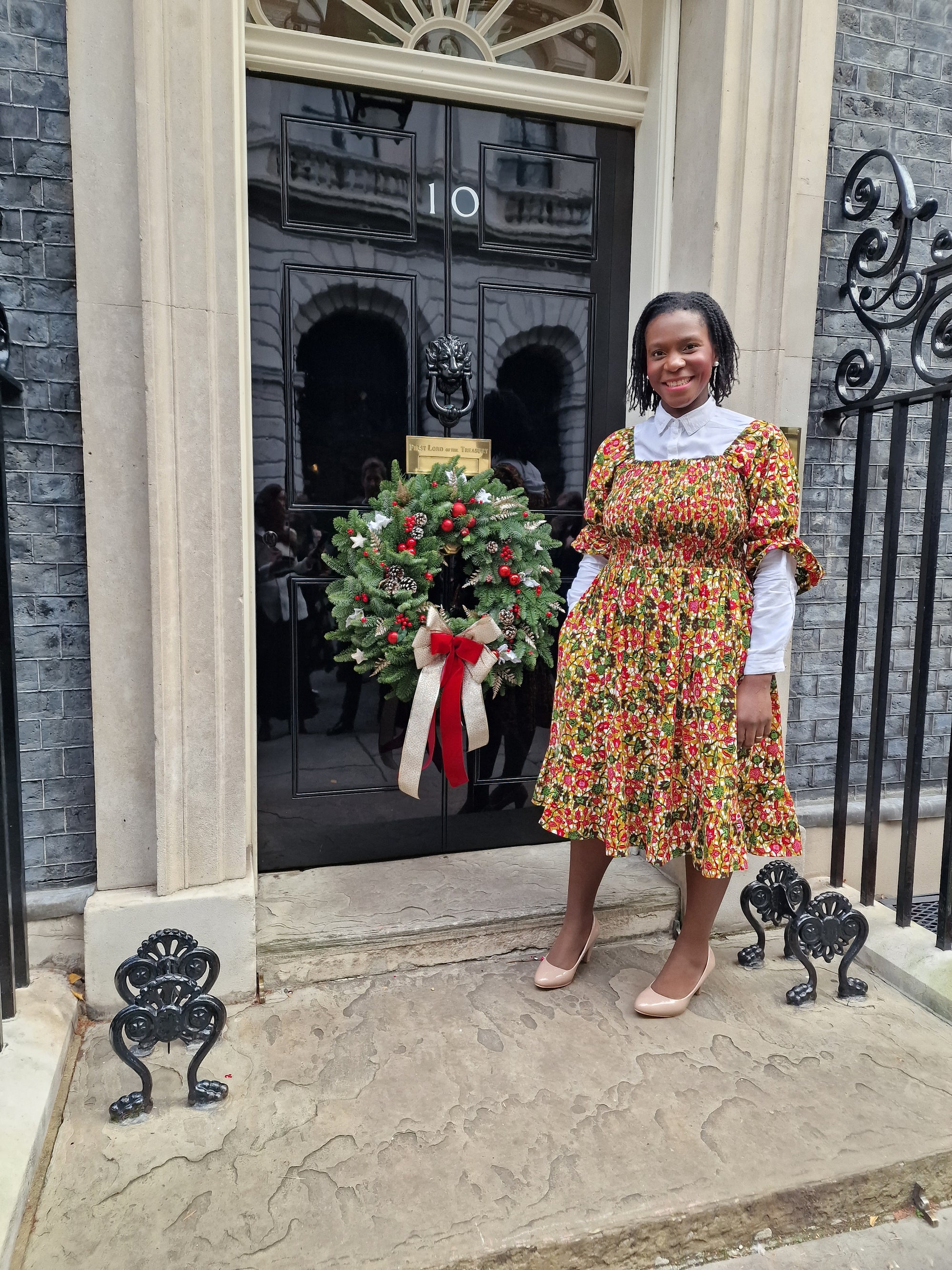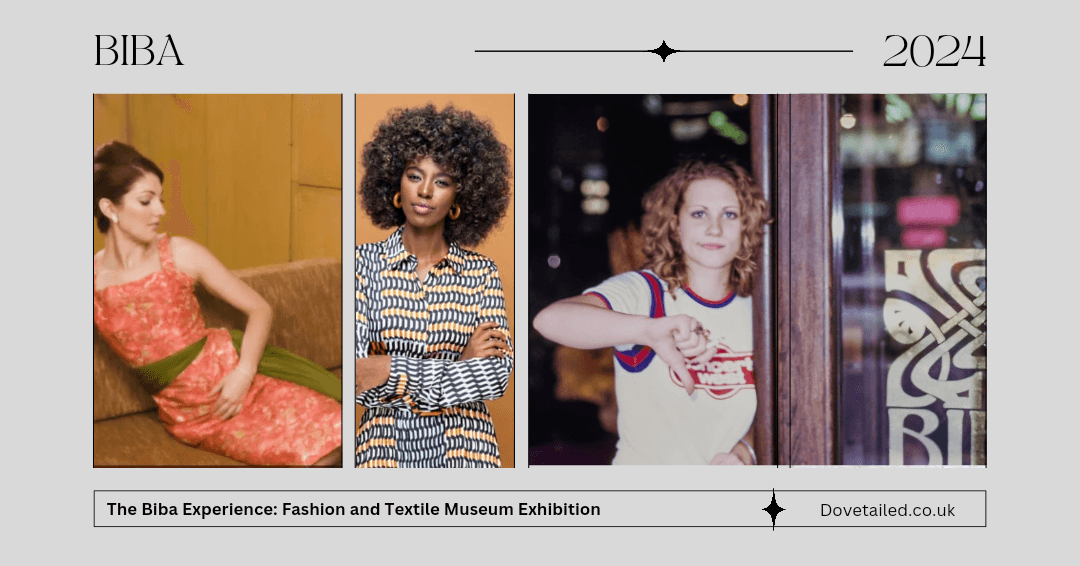The GBSB has returned! We follow 10 remaining competitors on their sewing journey where they delve into this week’s theme on West Africa; paying homage to vibrant garments inspired by the diverse continental area . In this next series of blogs, you can learn in more detail about the intricacy of the tapestry and rich fabrics that West Africa has to offer.
The Pattern Challenge takes inspiration from the Batakari (a Ghanaian smock) , a textile tradition derived from Ghana: known for its vibrant cultural tapestry. Batakari is a traditional garment mostly worn by men in Northern Ghana and is mostly characterised by its plaid patterns and holds not only a significant place in Ghanaian culture, but West African culture too.
Batakari has profound roots in Northern Ghana's traditional history, as the woven deboya fabric can be traced down many generations. It is believed that the Batakari was a tunic for warfare as Kings and Akan chiefs wore great-batatkari shirts heavily decorated with amulets and were much more colourful as they were worn during initiations or funerals of other chiefs. Other opinions believed that the Batakari was originally worn as a protective garment against the harsh climate of the region, providing insulation and durability. Beyond its practical utility, batakari has enormous cultural significance as it is commonly worn during important ceremonies, festivals, and traditional events, symbolising identity, heritage, and communal pride.

Moreover, the patterns found in batakari patterns hold deep cultural and symbolic meanings. Each design is meticulously crafted to convey messages and stories rooted in the local folklore and history. Batakari fabrics frequently contain symbols like zigzags, diamonds, and chevrons, representing concepts such as fertility, protection, unity, and strength. The colours used in Batakari also carry symbolic significance. For example, the colour blue represents purity, spirituality, and harmony, while red signifies vitality, passion, and courage. Green symbolises fertility, growth, and abundance, and yellow embodies prosperity and joy.
The production method of batakari involves a precise and labour intensive process. It begins with the harvested fabric made of cotton hand-spun with a wooden spinning wheel called a "tia." However, modern techniques have introduced mechanised spinning to meet the growing demand of the smocks. After, the threads are stretched and undergo the dying process using natural plant-based dyes to achieve vibrant and earthy hues. The locally sourced materials like indigo, baobab bark, and sorghum leaves are used to create the dyes resulting in a range of beautiful colours that are characteristic of Batakari. After dyeing , the yarn is carefully stretched and woven on traditional wooden looms into stripes and stoles. The four-inch-wide pieces are stitched together either by hand or machine. Artisans employ specific weaving techniques, often passed down through generations, and the batakari is typically embroidered around the neck, with V or U shapes cut over the chest.
There has been a debate between the fugu and batakari which has long ignited conversations among scholars, historians, and cultural enthusiasts. Fugu translates to cloth: the south of Ghana refer to it as batakari whereas the northern regions may call it binga. Some argue that the traditional wear of people from Northern Ghana was the “fugu” as it refers to the cotton, hand woven plaid tunic like shirt however batakari can be described as the general set of flowing gown and trousers which is made up of various fabrics. The batakari/smock has many different types of the traditional gown as it can be characterised by its use e.g. for celebrations, royals, citizens etc.
Furthermore, Batakari has emerged as a significant economic force in Northern Ghana. Many artists, weavers, and dyers earn a living from the manufacture and sale of Batakari fabrics, which helps the local economy and preserves traditional handicraft. Batakari has come to represent Ghanaian cultural heritage and national pride. Efforts have been undertaken both domestically and abroad to promote Batakari, highlighting its rich past.
Batakari, the traditional fabric of northern Ghana, embodies the spirit of cultural heritage, artistic excellence, and symbolic storytelling. Its vibrant colors, intricate patterns, and deep cultural significance have made it a cherished part of Ghanaian identity. From its ancient origins to its contemporary relevance, Batakari continues to captivate the imagination of many.
Want to have a go at sewing with African fabric? Shop here.
Looking for a range of sewing patterns designed specifically with African wax print fabric in mind, shop here.
Want to buy ready-made in a selection of Dovetailed garments? Shop ready made here.




